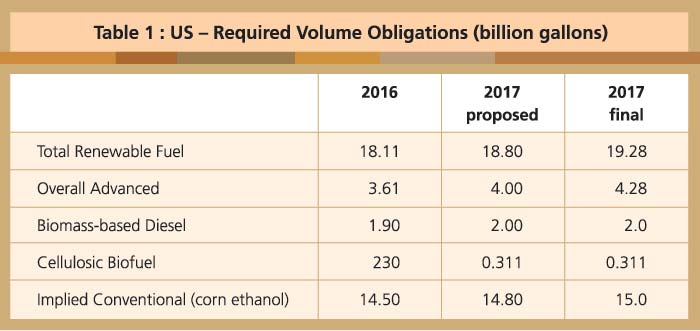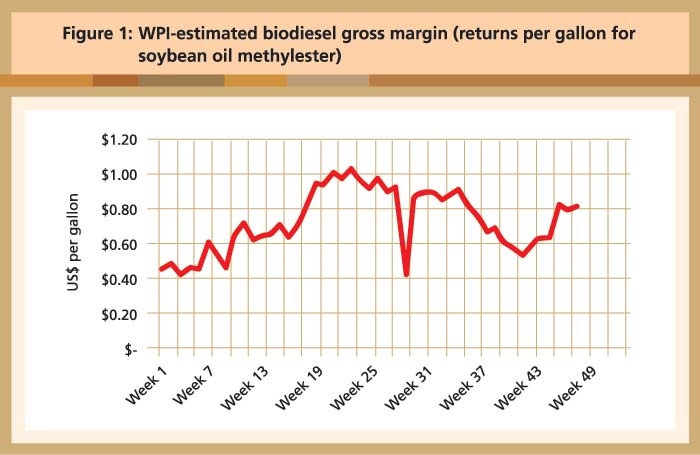



Five reasons for optimism
February, 2017 in Biofuels, Issue 1 - 2017
On Nov 23, 2016, the US Environmental Protection Agency (EPA) finalised the 2017 Required Volume Obligations (RVOs) for biofuels under the Renewable Fuel Standard (RFS). The overall volume was increased to 19.28 billion gallons versus the 18.8 billion gallons proposed by the agency on May 18.
This was the fourth consecutive year the EPA has boosted final volumes from the initial proposal and only the third time they have been finalised by the Nov 30 statutory deadline. The announcement was welcome news for the renewable fuels sector and will mean growth in both ethanol and biodiesel production, as well as consumption, in 2017.
Why WPI is bullish
• Increased RFS volumes will boost demand for biodiesel and ethanol
• Higher RINs prices will support blending of ethanol and biodiesel
• Exports will help add value to ethanol producers
• Fulfilling the advanced biofuels mandate will require more biodiesel
• Loss of the biodiesel blenders’ credit will lower biodiesel profitability
The 428 million gallon boost in the renewable fuel volume (Table 1) was based on the increases of 200 million gallons for the implied conventional biofuel (i.e. corn ethanol) category and 228 million gallons for the advanced category.

Source: EPA, WPI
Biodiesel producers generally maintained profitable margins last year and will see slightly higher supply and demand in 2017 as a result of the RVOs (Figure 1).

Source: USDA, EIA, WPI
While the 2017 and 2018 RVOs for biodiesel remained the same as the proposed rule, the increase in the overall advanced category will likely rely on that particular fuel to meet the target. This is because there is neither enough cellulosic nor other advanced biofuels supply to meet the overall volume requirements. Indeed, on the day of the EPA’s announcement, the January soybean oil futures contract rose from $0.34 to $0.37 based on the assumption that more biodiesel production would draw down end-of-the-year stocks.